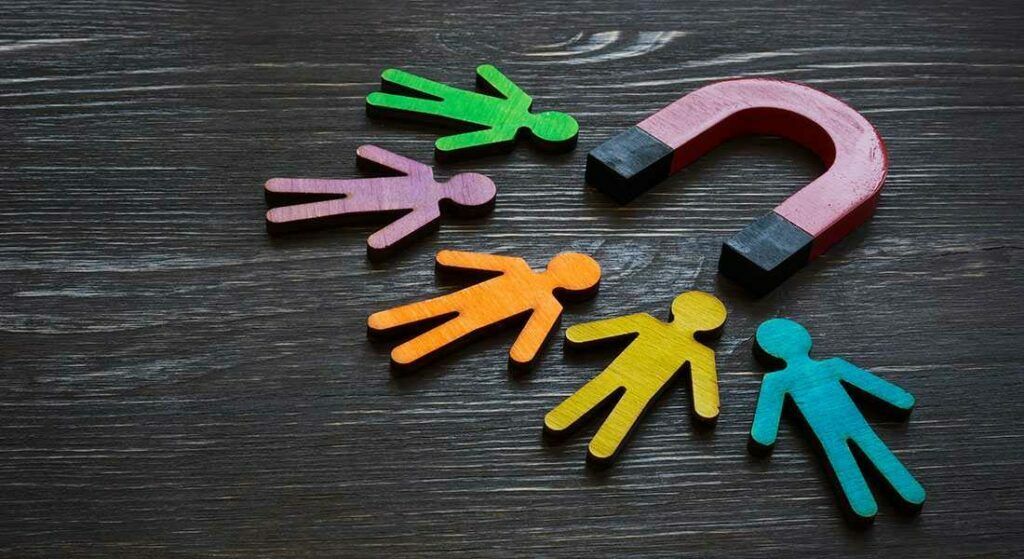In today’s highly competitive job market, retaining top talent has become a top priority for many organizations. Employee loyalty programs have emerged as a popular solution for boosting employee satisfaction and reducing turnover rates. By offering incentives and rewards for continued service, these programs can help to create a positive work environment and foster a sense of loyalty among employees. In this blog, we will explore the types of employee loyalty programs and provide suggestions for creating a successful program.
Contents
What Is An Employee Loyalty Program?
 An employee loyalty program is a type of initiative implemented by an organization to encourage employees to remain with the company for an extended period of time. The program typically offers rewards and incentives for continued service. The goal of an employee loyalty program is to boost employee satisfaction. And reduce turnover rates by fostering a sense of loyalty and commitment among employees. By investing in their employees, organizations can improve employee morale, increase productivity, and ultimately achieve a more positive work environment.
An employee loyalty program is a type of initiative implemented by an organization to encourage employees to remain with the company for an extended period of time. The program typically offers rewards and incentives for continued service. The goal of an employee loyalty program is to boost employee satisfaction. And reduce turnover rates by fostering a sense of loyalty and commitment among employees. By investing in their employees, organizations can improve employee morale, increase productivity, and ultimately achieve a more positive work environment.
What Are The Types Of Employee Loyalty Programs?
There are several types of employee loyalty programs, each with its own unique approach to incentivizing employee retention. Some of the most common types of programs include:
Length of Service Programs
These programs reward employees for reaching milestones in their tenure with the company. For example, an employee who has been with the company for 5 years may receive a bonus or additional paid time off. The goal of these programs is to recognize and reward employees for their longevity with the company.
Performance-Based Programs
These programs incentivize employees to perform at a high level by offering rewards for meeting or exceeding specific performance targets. For example, an employee who consistently exceeds sales targets may receive a bonus or a paid trip. The goal of these programs is to motivate employees to perform at their best and drive overall organizational success.
Wellness Programs
These programs encourage employees to prioritize their health and well-being by offering rewards for participating in healthy activities, such as exercise or healthy eating. For example, an employee who participates in a company-sponsored wellness program may receive a discount on their health insurance premium. The goal of these programs is to improve employee health and reduce healthcare costs for the company.
Professional Development Programs
These programs incentivize employees to continue learning and growing in their careers by offering rewards for completing training courses or certifications. For example, an employee who successfully completes a leadership training course may receive a promotion or a raise. The goal of these programs is to support employee growth and development and improve the overall skillset of the workforce.
Recognition Programs
 These programs reward employees for demonstrating exceptional performance or making a positive impact on the company. For example, an employee who goes above and beyond to help a customer may receive a gift card or a certificate of recognition. The goal of these programs is to acknowledge and reward employees for their contributions to the company and to improve morale and motivation.
These programs reward employees for demonstrating exceptional performance or making a positive impact on the company. For example, an employee who goes above and beyond to help a customer may receive a gift card or a certificate of recognition. The goal of these programs is to acknowledge and reward employees for their contributions to the company and to improve morale and motivation.
Each type of employee loyalty program offers its own unique benefits and can be tailored to the specific needs and goals of an organization. By understanding the different types of programs and considering the needs of their workforce, organizations can choose the type of program that will best serve their employees and their bottom line.
How Do These Programs Work Actually?
Employee loyalty programs work by offering incentives and rewards for continued service to the company. The specifics of how a program operates will depend on the type of program and the goals of the organization. However, here is a general overview of how these programs typically work:
- Enrollment
Employees are typically required to enroll in the program in order to be eligible for rewards and incentives. This may involve completing a simple registration form or signing up for a company-sponsored app or website.
- Earning Points or Credits
Employees earn points or credits based on their participation in the program. For example, an employee may earn points for each year of service with the company, for meeting performance targets, or for participating in a wellness program.
- Redeeming Rewards
Once an employee has accumulated a certain number of points or credits, they can redeem them for rewards or incentives. This may involve choosing from a selection of rewards or having the option to receive a bonus or additional paid time off.
- Tracking Progress
Employee loyalty programs often include a tracking mechanism to help employees monitor their progress and see how close they are to earning rewards. This may be a simple dashboard or an app that allows employees to see their current point balance and available rewards.
- Communication
Regular communication is an important component of any employee loyalty program. This may involve regular updates on program progress, reminders about upcoming rewards, and recognition for employees who have achieved milestones.
By offering rewards and incentives that are meaningful and relevant to employees, employee loyalty programs can help to boost employee satisfaction and reduce turnover rates. By creating a positive work environment and fostering a sense of loyalty among employees, organizations can increase productivity. Ultimately achieve a more positive work environment.
How To Design A Successful Employee Loyalty Program?
 Designing a successful employee loyalty program requires careful consideration of the specific needs and goals of your organization. As well as a clear understanding of what motivates your employees. Here are some key steps to consider when designing a successful program:
Designing a successful employee loyalty program requires careful consideration of the specific needs and goals of your organization. As well as a clear understanding of what motivates your employees. Here are some key steps to consider when designing a successful program:
Define Your Goals and Objectives
Start by clearly defining what you hope to achieve with your employee loyalty program. This might include reducing turnover rates, improving employee morale, or boosting productivity. Having clear goals in mind will help you design a program that is tailored to your specific needs.
Identify Your Target Audience
Consider the demographics of your workforce, such as age, gender, and job role, and think about what types of rewards and incentives would be most meaningful to them. For example, a younger workforce may respond well to rewards that are technology-focused, while an older workforce may be more interested in extra paid time off.
Choose the Right Rewards
Select rewards that are meaningful and relevant to your employees. This might include bonuses, paid time off, professional development opportunities, or exclusive discounts. Consider offering a range of rewards to cater to different preferences, and allow employees to choose the rewards that are most meaningful to them.
Create a Communication Plan
Regular communication is key to the success of any employee loyalty program. Consider how you will communicate program updates, reminders about upcoming rewards, and recognition for employees who have achieved milestones. This might include email updates, company-wide announcements, or a dedicated portal or app.
Implement and Evaluate the Program
Once you have designed your employee loyalty program, it’s time to put it into action. Launch the program, track its success, and make adjustments as needed. Regularly evaluate the program to ensure that it is meeting your goals and achieving the desired outcomes.
By following these steps and considering the specific needs and goals of your organization, you can design a successful employee loyalty program. That will motivate employees and retains your employees and contributes to your bottom line.
Conclusion
In conclusion, employee loyalty programs have become a popular solution for organizations looking to retain top talent and improve employee satisfaction. By offering rewards and incentives for continued service, these programs can foster a sense of loyalty and commitment among employees. Successful programs are designed with the specific needs and goals of the organization in mind. And offer meaningful and relevant rewards to employees.
Regular communication and evaluation are key components of any successful program. So, organizations should be prepared to make adjustments as needed to ensure the program is achieving the desired outcomes. By investing in their employees, they can improve employee morale, and increase productivity. Ultimately achieve a more positive work environment.
Employee wellness programs are the key to improving employee motivation, productivity, and retention. At MantraCare, we have a team of health experts, counselors, and coaches who serve corporate employees with 10+ wellbeing programs including EAP, Employee Diabetes Reversal, Corporate MSK, Employee Fitness, Corporate Yoga, and Employee meditation.
